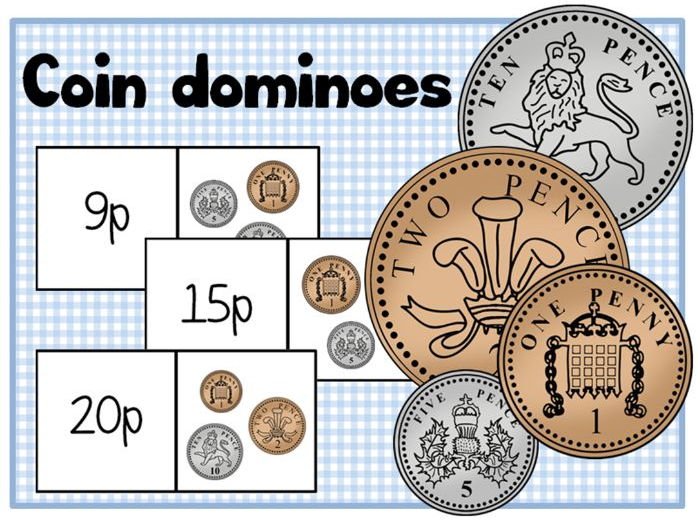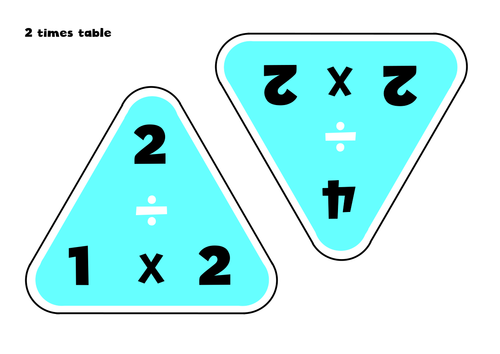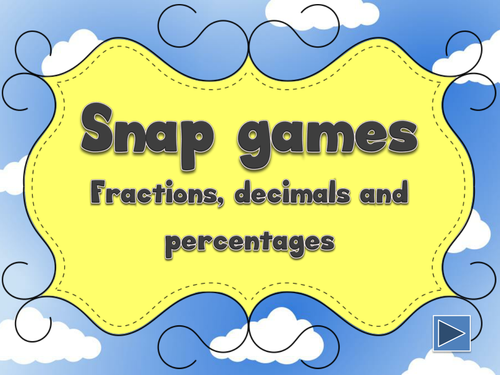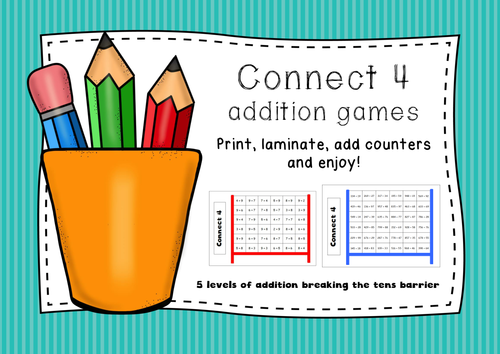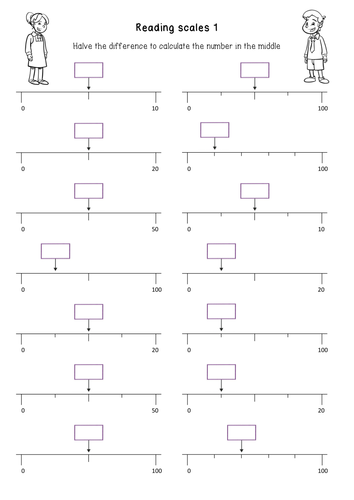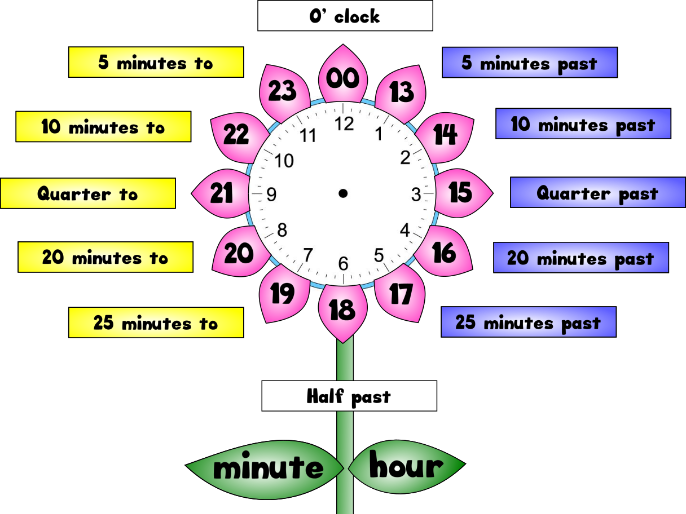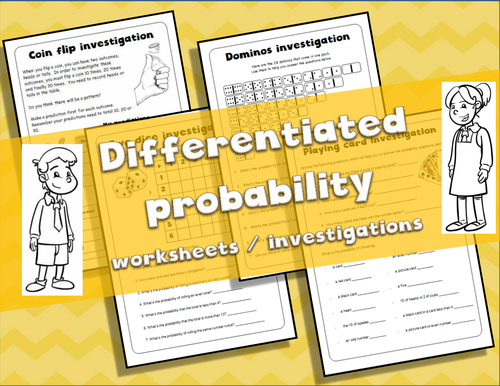
40Uploads
41k+Views
27k+Downloads
Mathematics

Coin dominoes, Money, 0-10p and 0-20p
Ready to print and laminate.
There are two sets of dominoes, one with dominoes 0 - 10p and another with dominoes 0 - 20p.

Fact family triangles and worksheets
10 sets of fact family triangles (tables 2 – 10).
12 fact family worksheets (tables 2 – 12).

Fractions, decimals and percentages - fun interactive white board games
6 enjoyable snap games focusing on two elements at a time e.g. fractions to decimals, starting with easier matches e.g. ½ and 0.5 and increasing in complexity.
The first three games are targeted for level 4 (big maths too) and the last three are level 5 questions.
The pupils click on two choices, which are then revealed. If they are incorrect, they need to reset the board. If they are correct, they may continue until they match two incorrect tiles. The game needs instruction initially, as with the limits of PowerPoint, it will not say if the matches are correct or not.
They can be used as a fun introduction, plenary or independent games. The games will work on an iPad that has PowerPoint. The game can be sent to the iPad as an email attachment or through Dropbox / Google Drive and opened with PowerPoint.
There is one larger version with sound and a smaller version without. Both have the same questions.

Equivalent fractions fun introduction game (1/2 and 1/3)
My new thing in class is not to introduce work but rather start at the end, with a quiz. Can they remember what they’ve learnt previously? Can they discover the concepts on their own? Let’s guess / infer together? We can get it wrong, but let’s try. (Metacognition)
This fractions game isn’t straight forward. The halves are pictured as 3/6, 2/4 etc. so this would be the next step on from simply naming fractions. It’s an introduction to equivalent fractions (1/2 and 1/3).
The game is interactive, with the aim of popping all of the bubbles. Press a bubble to choose a question. Press the correct answer on the question slide and you return to the question screen with your bubble popped. Press a wrong answer and it simply shakes. Keep going until you choose the correct one.
You can keep a record of the scores when the presentation is active by typing them in yourself on the question screen. It is also possible to name the teams in the same way.

Connect 4 addition.
5 connect 4 games to print and laminate. Sums developed to promote and develop addition, braking the tens barrier. The sums begin with 1 digit + 1 digit and progress up to 3 digit + 2 digit numbers.

Reading scales, an easier introduction
Finding missing numbers on scales can be a real challenge for some. Finding the difference before calculating half and adding this to the initial number is as confusing to some as it sounds! The easier introduction is developing these skills one step at a time, by starting with 0. These two step worksheets, with simple PowerPoint introduction, will ensure more of the class will achieve.

FUN colouring division with remainders, times tables 2-10
9 colouring sheets for fun differentiated times table practice. Answers are included as are times tables cards for LA.
Pupils need to calculate the remainders for each number, follow the key at the foot of the page and colour the boxes accordingly. Pupils guess the picture at the end.

Class clock display for KS2
Pimp up your class clock with this display that turns it into a teaching resource.
You have a choice of 24 hour clock or minutes.

Wall clock in Welsh, Cloc CA2 barod i lamyneiddio
Arddangosfa cloc am eich dosbarth. Addurnwch eich cloc ddiflas fel ei fod yn adnodd ar gyfer gwersi Mathemateg.
Barod i lamyneiddio a gosod fel y llun.

Times tables display
I have created these to use in my class next year and am so pleased with how they’ve turned out. I have only created them to 10x.
I have included a Powerpoint presentation to learn the 2x times table and black and white copies that you can use on worksheets.
I hope you enjoy too.

Differentiated money worksheets
8 differentiated money worksheets created for year 4. This includes;
• Adding money by counting repeating coins,
• Adding money ordered largest to smallest,
• Adding money in random orders,
• Adding decimals (column method),
• Reasoning skills from a menu (following pictures),
• Adding two 2 digit numbers,
• Finding change from £1, £2, £5 and/or £10,
• Money word problems (not differentiated but gets harder).
There is a differentiated ‘First to spend £10’ game and a laminate to use with lower abilities (to use a whiteboard pen).

4 Differentiated probability worksheets / investigations
I’ve used these very successfully with year 5 to introduce a practical application to probability. I recommend that you use coins, dice, dominos and playing cards during the lessons but they can be used just as easily without. You may also have a large dice, dominos or playing cards that you can use to introduce the 4 lessons, or to use with lower abilities.
The tasks in order of complexity are;
• Coin toss investigation,
• Dice roll investigation,
• Dominos investigation and
• Playing cards investigation.

Introduction to the language of probability quiz
Fun game / presentation to introduce the language of probability.
It uses the terms; Impossible, Very unlikely, Unlikely, Even chance, Likely, Very likely and Certain.
There is a brief introduction and these slides can be removed if you wish, including rules of the game.
The board has 12 interactive questions where pupils click on their choice before the question is revealed. There are 7 possible answers to each question. Clicking the wrong answer will make the answer shake to indicate that it is wrong. When a correct answer is chosen, it will take you back to the question board.
You can keep a record of the scores when the presentation is active by typing them in yourself on the question screen. It is also possible to name the teams in the same way.

Algebra picture puzzles introduction - powerpoints and worksheets KS2
Introduce Algebra at Primary / Secondary with these 22 ppts and 12 worksheets (9 of which are editable).
The 22 presentations begin with simple picture representations and explore pupil’s reasoning skills through a variety of sized and shaped grids, representations of scales as equal and scales as amounts to reasonably compare.
Most numbers can be edited on the powerpoints and blank worksheets are provided for extra differentiation (if necessary).
A lovely introduction to Algebra in the new Curriculum for Wales (CfW).

